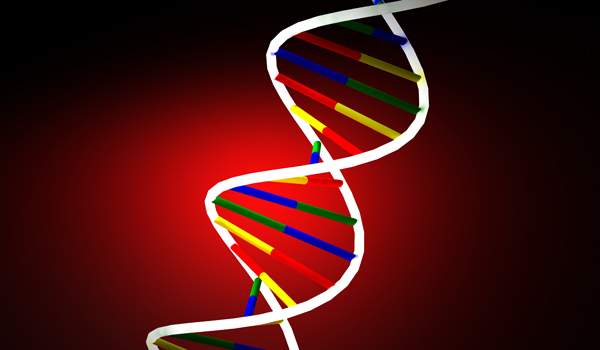Genomics Pioneer Craig Venter Envisions Future of Synthetic Life

NEW YORK — Life is a DNA software system, genome scientist Craig Venter told a packed auditorium here at the American Museum of Natural History Monday night (Oct. 21). In his talk, Venter offered a longsighted view of the creation and digitization of synthetic life.
Creating synthetic life is just a crowning achievement of Venter's career and the evolution of the field of biology. In 2000, Venter led of one of the two teams that sequenced the human genome, the blueprint for life. Then in 2010, his team transplanted man-made DNA into a bacterial cell to create the first synthetic organism.
To create a synthetic cell, Venter said, he and his colleagues had to find a way to write the DNA software and boot it up. And this technology opened up a host of practical applications, he explains in his new book "Life at the Speed of Light" (Viking Adult, 2013), in which Venter tells the story of these milestones and speculates on the future of biology in the digital age. [Unraveling the Human Genome: 6 Molecular Milestones]
Biological teleportation
His ideas only get more unusual from there. What if, Venter speculated, one could send a genome across the solar system at the speed of light, and reconstitute it on the other side? For example, if a rover discovered life on Mars, it could sequence the life-form's DNA and beam the code back to Earth, where scientists could rebuild the organism.
Of course, Venter was talking about simple life-forms such as bacteria. "We're not ready to beam humans across the universe anytime soon," he said.
But the reality is still impressive. The ability to synthesize life from its DNA alone could vastly accelerate vaccine production, Venter said. Scientists could sequence an emerging flu virus anywhere in the world, and send that sequence over the Internet to pharmaceutical companies that could develop a vaccine for it. Ultimately, he said, people may be able to download genetic sequences to a machine that produces vaccines in their own homes.
Get the world’s most fascinating discoveries delivered straight to your inbox.
Venter and his colleagues have laid the foundations for these developments by developing the tools needed to construct living cells.
Synthesizing life
The first step, Venter explained, was making software that could build its own hardware. His team created a synthetic bacteriophage, a virus that infects bacteria, and injected that into E. coli bacteria cells. The cells incorporated the synthetic DNA into their genomes, and they started assembling bacteriophages. [5 Crazy Technologies That Are Revolutionizing Biotech]
Venter's next project was ambitious: His team modified a chromosome from the bacterium Mycoplasma mycoides and inserted it into the cell of the bacterium Mycoplasma capricolum. To do that, his team had to develop sophisticated new genetic techniques.
Once inserted into the host, M. mycoides' DNA started making instructions for enzymes that chewed up the host bacterium's genome. The result? "We transplanted the genome from one cell into another species, and in the process of doing that, converted the one species into the other," Venter said.
The final step was to piece together an entire bacterial chromosome and put that into a cell where it would replicate — no easy feat. To do that, Venter and his team created big chunks of bacterial DNA and assembled these inside a yeast cell. After several roadblocks and years of trial-and-error, the scientists produced the first synthetic cell in 2010.
The synthetic genome contained a "watermark" sequence that included the names of the scientists who worked on it. It also included quotes by physicists Richard Feynman and Robert Oppenheimer, and this quote by writer James Joyce: "To live, to err, to fall, to triumph, to recreate life out of life."
Playing God?
Insofar as the team created an organism capable of thriving and self-replicating, Venter and his colleagues had created life.
Were they playing God?
"In the restricted sense that we had shown with this experiment how God was unnecessary for the creation of new life, I suppose that we were," Venter writes in his new book.
But for Venter, synthesizing life is merely the logical outcome of years of genetic tinkering.
Modern biology was born, Venter believes, when Austrian physicist Erwin Schrödinger gave a series of lectures entitled, "What is Life?" in Dublin in 1943. Schrödinger proposed that chromosomes were a kind of "code script," which might be as simple as Morse code.
In 1944, three Canadian and American scientists — Oswald Avery, Colin MacLeod and Maclyn McCarty — performed an experiment that proved DNA, and not proteins, was the hereditary material of cells. And in 1953, American biologist James Watson and his British colleague Francis Crick discovered the structure of DNA, building on work by Rosalind Franklin and Maurice Wilkins.
The 1960s and 1970s witnessed huge advances in the understanding of DNA and recombinant DNA technology. Building on these foundations, Venter's group and the publicly funded Human Genome Project produced the first draft sequence of the human genome in 2000.
Follow Tanya Lewis on Twitter and Google+. Follow us @livescience, Facebook & Google+. Original article on LiveScience.

